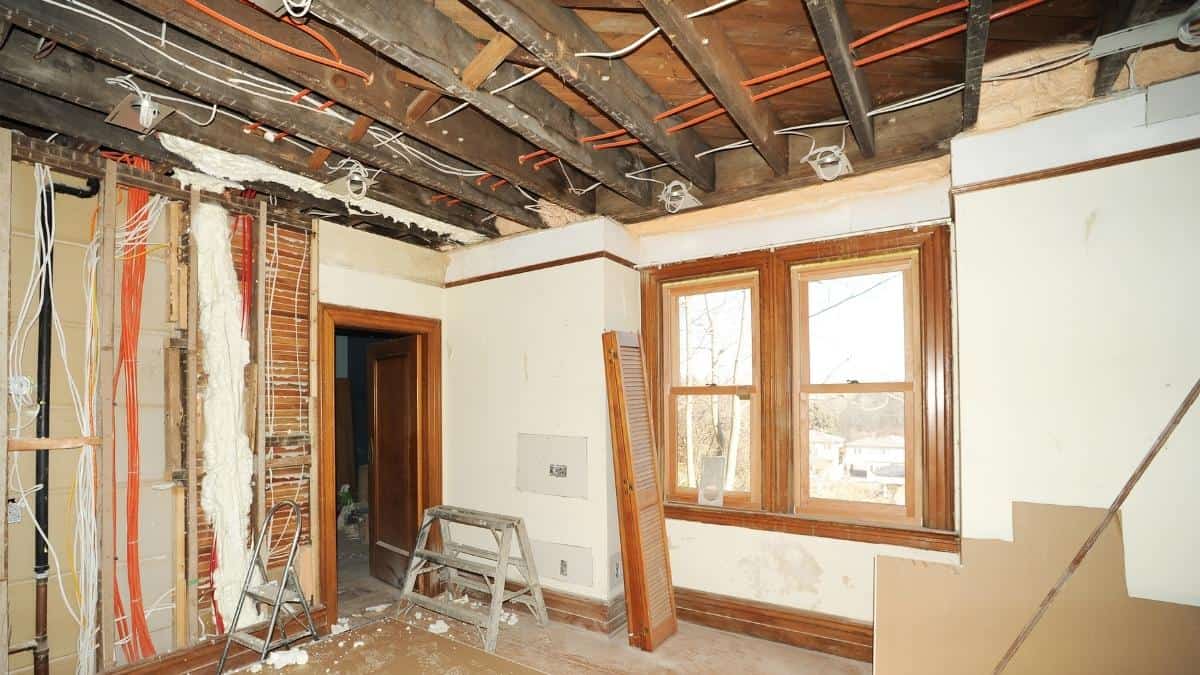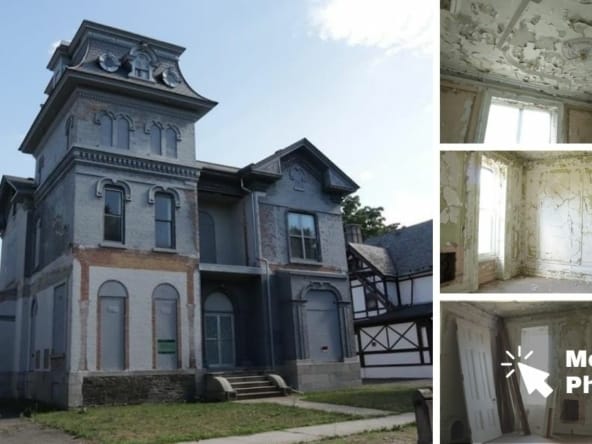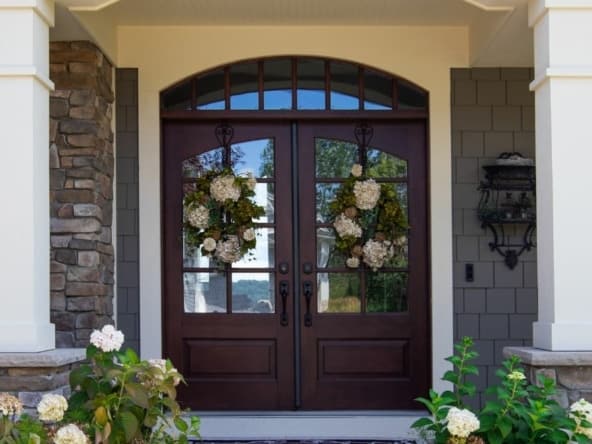If you’ve house hunted before, you know how difficult it is to get decent housing, and the thought of creating your perfect abode by buying and renovating an old house may pop up occasionally.
While acquiring the fixer-upper presents an opportunity to build your dream home with an established foundation, it is not a walk in the park.
There are various factors to consider before embarking on the time-consuming and expensive journey to ensure you don’t regret it.
Let’s look into some of them to help you get value for your money.
1. The Price
Of course, pricing is always a priority factor when making any purchase. However, when buying an old property you wish to renovate, a lot more is at stake, so you need to think long and hard about the house’s price.
Remember, one of the most prominent reasons to purchase an old home is the relatively low price range compared to other real estate.
Therefore, you’d want a house with fair pricing so you can use the extra cash on repairs and renovations on the old house to transform it to your liking. It should cost significantly less than a newly constructed building.
However, be wary of fixer uppers with shallow price tags. Such pieces of real estate usually have serious underlying issues that may cost you a fortune in your renovation bid.
Read More: Is It Smart To Pay For A House In Cash?
2. Duration of Vacancy
You know how important it is to know how long someone’s been single before jumping into a committed relationship? Well, the same concept applies to buying an old house.
Committing to purchasing an old house and renovating it is a severe affair that necessitates you to know everything about the place. Knowing the duration of the house’s vacancy could help you gauge its shape and the level of renovation it may need.
If it was recently occupied, chances are that it is in excellent condition and only requires a few repairs as you incorporate your desired design.
On the other hand, houses that have been vacant for long periods often sustain various damaged components, especially when they are not regularly maintained. Therefore, you may spend a lot more on their restoration.
3. Structural Integrity
No one wants to live in a safety hazard. Imagine living in a building at risk of collapsing at any moment; it would indeed be tragic!
In this regard, old houses may have sustained tremendous damage over the years, compromising their structural integrity. Therefore, it is paramount to have the building’s foundation checked to see whether it can withstand the test of time. In most cases, you may be required to conduct an underpinning to strengthen its foundation.
Check for cracks on walls, windows, and door heads, which indicate a compromised foundation, or hire a surveyor to write a structural report. Ensure you and your loved ones’ safety and avoid making a regrettable purchase.
Read More: How Do You Avoid Buying a Money Pit?
4. Insurance Cost
It is essential to have your house insured to protect your valuable assets in case of a natural disaster or damage from unforeseen circumstances.
Since the kind of home insurance coverage you get depends on your house features and the amount of money you have, you should always consider the insurance cost before purchasing an old house.
The vintage houses usually have antique elements such as Dutch doors and tin ceilings which may cost a fortune to replace in case of damage, thus elevating insurance costs.
It would be wise to consult an insurance agent and get a quotation before deciding to make the purchase and subsequent renovations.
5. Return on Investment
Completing the renovation of an old house to a habitable home with appealing aesthetic features is not an easy feat. Generous financing is required to complete the project.
You may spend a lot of money from buying various materials and equipment to paying contractors. As such, you want to ensure a great investment return if you decide to sell the house.
Suppose the accumulating cost of buying and renovating the house is higher than its selling price in the existing market. In that case, it probably isn’t worth buying and renovating the old house.
Read More: What Are The Risks Of Buying An Old House?
6. Planned Renovations
It goes without saying that if you plan to buy an old house and make adjustments, you should consider the renovations before making the purchase. Ensure the house’s structure and layout do not limit your planned renovations to avoid frustrations after buying it.
For instance, if you plan to have an open design, ensure the house can accommodate it before purchasing. The best way to ensure this is by consulting and working with professional architects, contractors, and interior designers.
Similarly, you should confirm the renovations and improvements you plan to make are within your budget to avoid financial woes.
7. Time
Renovating an old house is a time-consuming exercise that requires a lot of precision to get right. Depending on the severity of damage sustained to the building and the desired uplift, the activity could take weeks or months.
Hastening the process could result in undesirable outcomes as you may end up with a finish you did not want.
Therefore, it is vital to consider the time it’ll take to complete the renovation project and make adequate living arrangements as you wait.
8. Drainage
Although a house’s drainage is one of its most essential features, most people do not consider the system’s state before buying an old home.
The drainage system has a significant bearing on a building’s structural integrity since leaking drainage systems could deteriorate the ground’s bearing capacity and collapse the structure.
In this regard, most old buildings have clay pipes as part of their drainage systems. Due to the material’s fragility, the gutters and pipes often develop cracks, leak, and create safety hazards.
If you plan to buy an old building, ensure its drainage systems are of the past half-decade or replace it with PVC pipes if you have the financial capacity.
9. The Lifespan of the Components and Systems
The lifespan of components is perhaps the most essential factor to consider when buying an old house since it determines the magnitude of renovations you’ll make to the property.
Let’s explore some crucial components and their lifespans so you can know where to start.
Roof System
Below are the lifespans of common roofing systems you’ll find in old homes:
| Material | Lifespan |
| Asbestos Cement Shingles | 40 to 60 years |
| Asphalt Shingles | 24 to 30 years |
| Wood | 30 to 40 years |
| Clay Tiles | 100 years |
Plumbing Pipes
Below are the lifespans of different plumbing pipes:
| Material | Lifespan |
| ABS | 50 to 80 years |
| Copper | 50 to 80 years |
| Galvanized Steel | 40 to 60 years |
| PVC | 50 to 80 years |
| Clay | 50 to 60 years |
| Cast iron | 50 to 80 years |
Foundation
Account for the home’s foundation type and expected longevity when deciding whether to purchase an old house for durability. Foundation materials have different durabilities as outlined below:
| Material | Lifespan |
| Brick Pier | 50 to 80 years |
| Treated Wood Piles | 40-75 years |
| Thickened Edge Concrete Slab | 100 years |
| Concrete Footing | 100 years |
| Stacked Concrete Block | 25 to 50 years |
Read More: Is It Normal For An Old House To Settle?
Pro tip: These tables represent some of the most common and essential house components that require renovations when you purchase an old house. However, you may be required to make further corrections and improvements based on the existing damages and your taste.
Why Go Through the Trouble of Buying and Renovating an Old House?
Given the various factors to consider when buying an old house, you may wonder whether it is worth the hassle. If done carefully and evaluating the multiple conditions, buying and renovating an old house may be the best decision you have ever made.
If you plan to sell the property, you stand a chance of reaping outrageous benefits. You can buy the fixer-upper at a low price and make affordable renovations to increase the property’s value and profit from the sale.
Similarly, the renovation process presents an opportunity to turn the house into your ideal home at subsidized costs. You can unleash your inner architect and design your dream home with desired features and decorative components. Unleash your creativity.
Read More: What Should I Look For When Buying An Old House?
Conclusion
Buying and renovating a house to create a decent roof over your head is a considerable risk. You may end up with an uninhabitable home and spend substantial money in a bid to salvage it.
However, you could make a wise purchase decision with a few mentioned factors and enjoy its fruits.
Ultimately, assess the old house on offer to determine its suitability for renovations.




